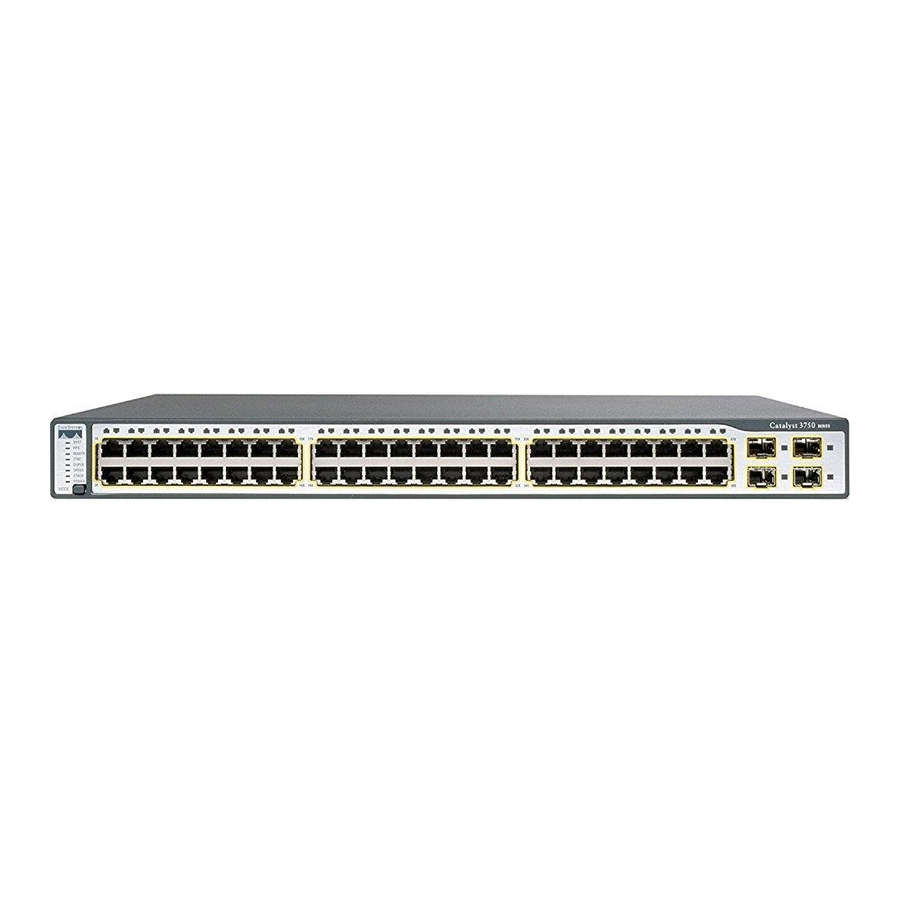Table 1
Product Features and Benefits (Continued)
Feature
Integrated Cisco IOS Software
Features for Bandwidth
Optimization
Scalable Stacking
QoS/Control
Advanced QoS
All contents are Copyright © 1992–2004 Cisco Systems, Inc. All rights reserved. Important Notices and Privacy Statement.
Benefit
• Per-port broadcast, multicast, and unicast storm control prevents faulty end
stations from degrading overall systems performance.
• IEEE 802.1d Spanning Tree Protocol support for redundant backbone
connections and loop-free networks simplifies network configuration and
improves fault tolerance.
• PVST+ allows for Layer 2 load sharing on redundant links to efficiently utilize the
extra capacity inherent in a redundant design.
• IEEE 802.1s Multiple Spanning Tree Protocol (MSTP) allows a spanning-tree
instance per VLAN, enabling Layer 2 load sharing on redundant links.
• Equal-cost routing for Layer 3 load balancing and redundancy across the stack.
EMI is required.
• Local Proxy Address Resolution Protocol (ARP) works in conjunction with Private
VLAN Edge to minimize broadcasts and maximize available bandwidth.
• VLAN1 minimization allows VLAN1 to be disabled on any individual VLAN
trunk link.
• VLAN Trunking Protocol (VTP) pruning limits bandwidth consumption on VTP
trunks by flooding broadcast traffic only on trunk links required to reach the
destination devices.
• Internet Group Management Protocol (IGMP) snooping provides fast client joins
and leaves of multicast streams and limits bandwidth-intensive video traffic to
only the requestors.
• Multicast VLAN Registration (MVR) continuously sends multicast streams in a
multicast VLAN while isolating the streams from subscriber VLANs for
bandwidth and security reasons.
• Up to 12 EtherChannel groups are supported per stack.
• Cisco StackWise stacking creates a 32 Gbps backplane. Stacking does not require
user ports. Up to 9 units can be stacked together for a maximum of 468 10/100
ports, 252 10/100/1000 ports, 108 optical aggregation ports, 9 10 Gigabit Ethernet
ports,or any mix thereof.
• Cross-stack QoS allows QoS to be configured across the entire stack.
• 802.1p class of service (CoS) and Differentiated Services Code Point (DSCP) field
classification are provided, using marking and reclassification on a per-packet
basis by source and destination IP address, source and destination Media Access
Control (MAC) address, or Layer 4 Transmission Control Protocol/User Datagram
Protocol (TCP/UDP) port number.
• Cisco control-plane and data-plane QoS ACLs on all ports ensure proper marking
on a per-packet basis.
• 4 egress queues per port enable differentiated management of up to 4 traffic
types across the stack.
• Shaped Round Robin (SRR) scheduling ensures differential prioritization of
packet flows by intelligently servicing the ingress queues and egress queues.
• Weighted Tail Drop (WTD) provides congestion avoidance at the ingress and
egress queues before a disruption occurs.
• Strict priority queuing guarantees that the highest-priority packets are serviced
ahead of all other traffic.
• There is no performance penalty for highly granular QoS functionality.
Cisco Systems, Inc.
Page 7 of 22

